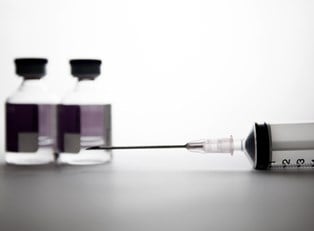Though it can be a life-saving antibiotic under most circumstances, penicillin can be a deadly poison to a select few who suffer an allergic reaction. Penicillin allergies are not uncommon, with approximately 10% of the population experiencing an allergic reaction when exposed to the medicine.
What is Penicillin?
Penicillin is an antibiotic and one of the most commonly prescribed medicines in the world. Penicillin is part of the beta lactams family of antibiotics, which includes piperacillin, oxacillin, cloxacillin, ampicillin, dicloxacillin, nafcillin, ticarcillin, carbenicllin, and amoxicillin.
Non-allergic vs. Allergic Reactions
A variety of adverse reactions can happen after taking penicillin. It’s important to be able to distinguish between allergic reactions and non-allergic reactions, which are much more common. Many people report that they have a penicillin allergy when, in fact, they actually just experience non-allergic side effects, such as stomach pain and diarrhea.
This mistake can result in a person with a bacterial infection being treated with a less effective drug, which can lead to antibiotic failure or even a resistance. This misidentification can not only be costly, but it can also prolong a patient’s illness.
Allergy Symptoms
Mild or moderate allergic reactions upon exposure to penicillin occur in approximately 1 to 5% of the population. An actual allergic reaction occurs when the body’s immune system recognizes the penicillin drug as a foreign invader. The body overreacts, attacking itself in order to be rid of the medicine. Several different symptoms of an allergic reaction include:
- Hives, or itchy spots that can last for hours
- Angioedema, or swelling under the skin that's commonly found on the face
- Tightness of the throat
- Wheezing
- Coughing
- Trouble breathing
Repeated Exposure
It’s important to be aware of any past symptoms because they can later develop into more severe reactions if an allergic person is ever exposed to penicillin again. This can be something as dangerous as anaphylaxis, a life-threatening allergic reaction. Symptoms will include those associated with an allergic reaction, but will escalate to deadly symptoms that can include:
- Low blood pressure
- Abdominal pains
- Difficulty breathing
- Swelling of the throat
- Vomiting
If medical attention is not immediately administered during anaphylaxis, death can occur. Fortunately for most people who suffer from penicillin allergies, anaphylaxis is uncommon.



